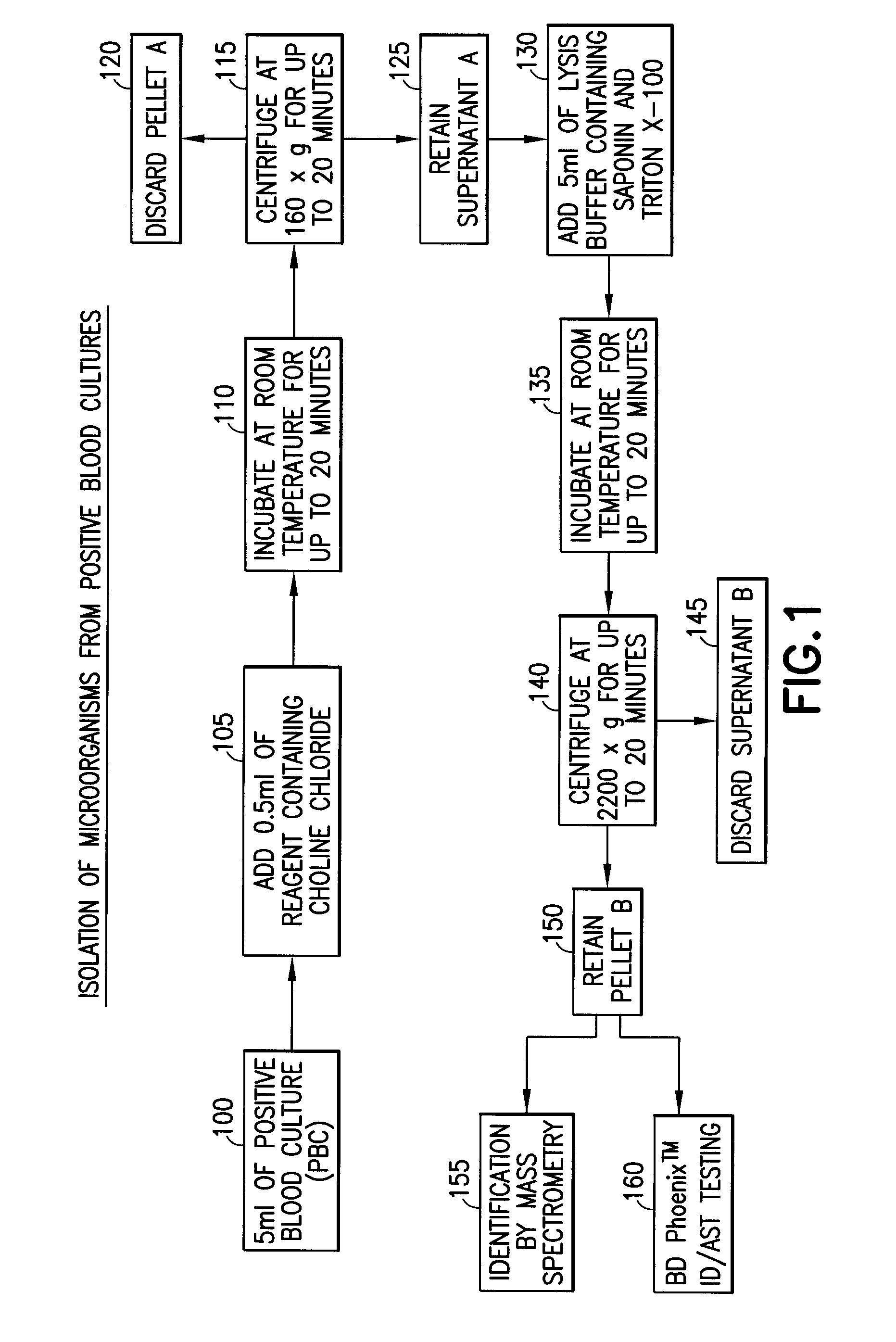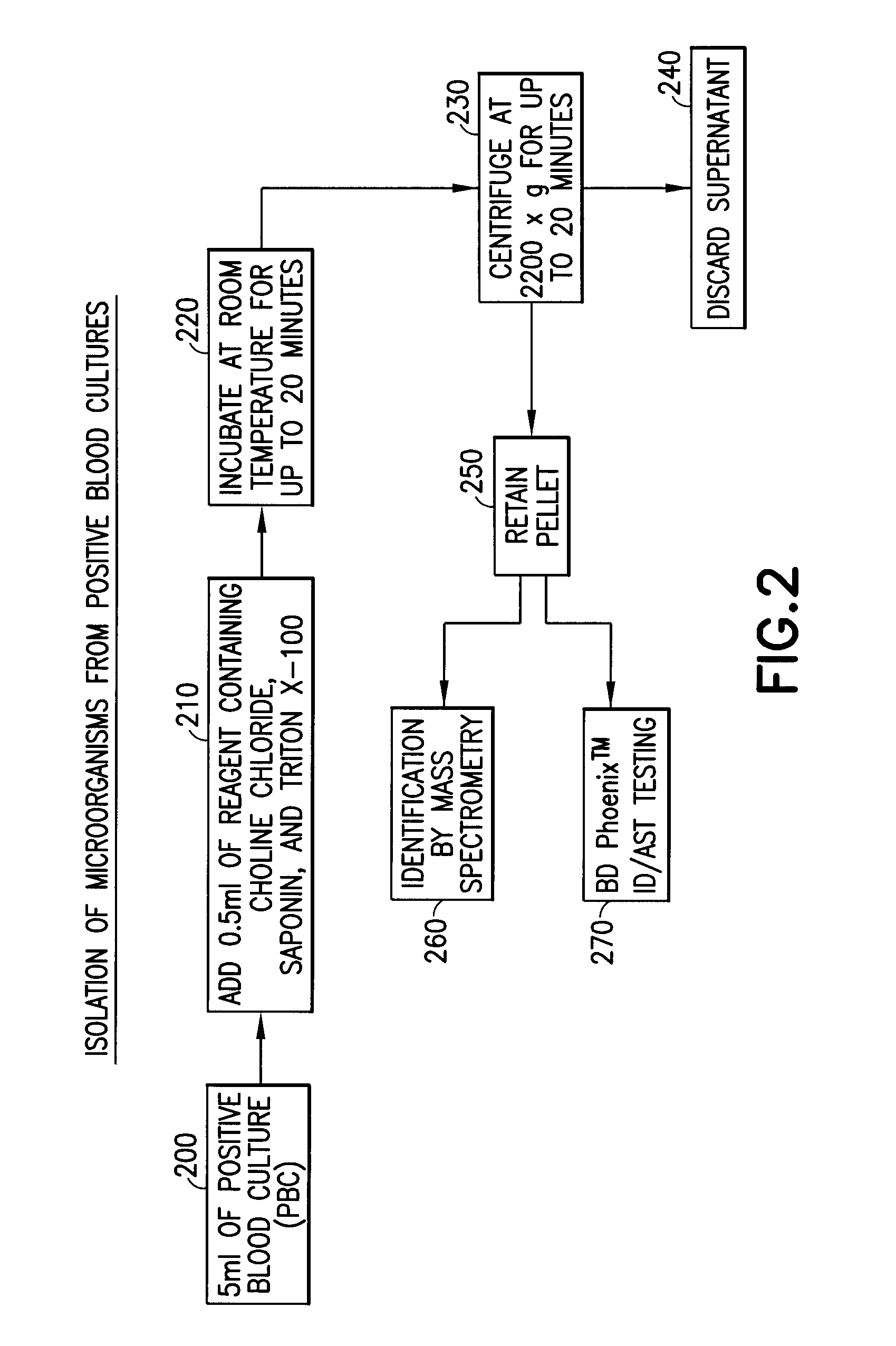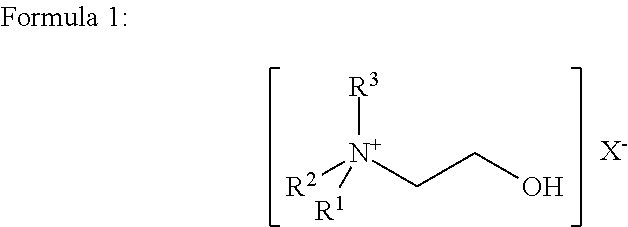Method for direct and rapid identification of microorganisms and antimicrobial susceptibility testing from positive blood cultures
a technology of antimicrobial susceptibility testing and direct and rapid identification, which is applied in the field of direct and rapid identification of microorganisms and antimicrobial susceptibility testing from positive blood cultures, can solve the problems of multiple organ failure, death, and blood flow problems, and achieve the effects of preventing the spread of infectious diseases
- Summary
- Abstract
- Description
- Claims
- Application Information
AI Technical Summary
Benefits of technology
Problems solved by technology
Method used
Image
Examples
example 1
Isolation of Viable Microorganism from a PBC Sample and Subsequent Identification by Mass Spectrometry
[0029]Twenty different PBC samples known to each contain a different strain of a gram-positive bacterium were prepared according to the method below. The twenty different microbial strains tested are listed in Table 1 below.
TABLE 1Gram-positive strains testedGram-positive MicroorganismNumber of StrainsEnterococcus faecalis4Staphylococcus aureus4Staphylococcus epidermidis2Staphylococcus haemolyticus1Staphylococcus lugunensis1Streptococcus agalactiae2Streptococcus pneumoniae3Streptococcus pyogenes1Viridans Streptococci2Total Number of Strains Tested20
[0030]Three of the twenty strains contained S. pneumoniae. A portion of each PBC sample (5 ml) was combined with 0.5 ml of a 20% aqueous solution by volume of choline chloride and incubated at room temperature for 20 minutes. The final concentration of choline chloride, when combined with the sample, was 1.8% by volume. The PBC sample con...
example 2
Isolation of Viable Microorganism from a PBC Sample Using Two Different Lysis Buffers and Subsequent Identification by BD Phoenix™ ID
[0034]A gram-positive panel and a gram-negative panel of PBC samples were generated using the BD BACTEC™ Instrumented Blood Culture System (Becton, Dickinson and Company) with each test organism, placing the sealed culture bottles in a BD BACTEC™ FX Automated Blood Culture Instrument (Becton, Dickinson and Company), and incubating the bottle until a positive result was indicated, usually within 12-24 hours. A portion of each PBC sample (5 ml) was added to 0.5 ml of a 20% aqueous solution by volume of choline chloride and incubated at room temperature for 20 minutes. The final concentration of choline chloride when combined with the sample was 1.8% by volume. The PBC sample containing the choline chloride solution was centrifuged at 160×g for 5 minutes to pellet the blood cells, leaving the microorganism in the supernatant. The supernatant was transferr...
example 3
Isolation of Viable Microorganism from a PBC Sample Using Two Different Lysis Buffers and Subsequent AST Testing
[0036]A portion of the pelleted microorganism obtained in Example 2 was used to inoculate 4.5 ml of BD Phoenix™ ID broth (Becton, Dickinson and Company) to make a cell density equivalent of approximately 0.5 McFarland Standard. A portion of the inoculum was use to inoculate the AST portion of a BD Phoenix™ ID / AST panel (Becton, Dickinson and Company). The BD Phoenix™ ID / AST System is described in, e.g., U.S. Pat. Nos. 5,922,593, 6,096,272, 6,372,485, 6,849,422, and 7,115,384, the contents of which are hereby incorporated by reference in their entirety.
[0037]The antimicrobial susceptibility minimal inhibitory concentration (MIC) for a series of antibiotics was calculated for each of the isolated microbial pellets prepared in Example 2 (“Test Method”). The MIC results from the microbial pellets from Example 2 were compared to the MIC results from the same strains obtained fr...
PUM
| Property | Measurement | Unit |
|---|---|---|
| volume | aaaaa | aaaaa |
| volume | aaaaa | aaaaa |
| concentration | aaaaa | aaaaa |
Abstract
Description
Claims
Application Information
 Login to View More
Login to View More - R&D
- Intellectual Property
- Life Sciences
- Materials
- Tech Scout
- Unparalleled Data Quality
- Higher Quality Content
- 60% Fewer Hallucinations
Browse by: Latest US Patents, China's latest patents, Technical Efficacy Thesaurus, Application Domain, Technology Topic, Popular Technical Reports.
© 2025 PatSnap. All rights reserved.Legal|Privacy policy|Modern Slavery Act Transparency Statement|Sitemap|About US| Contact US: help@patsnap.com



